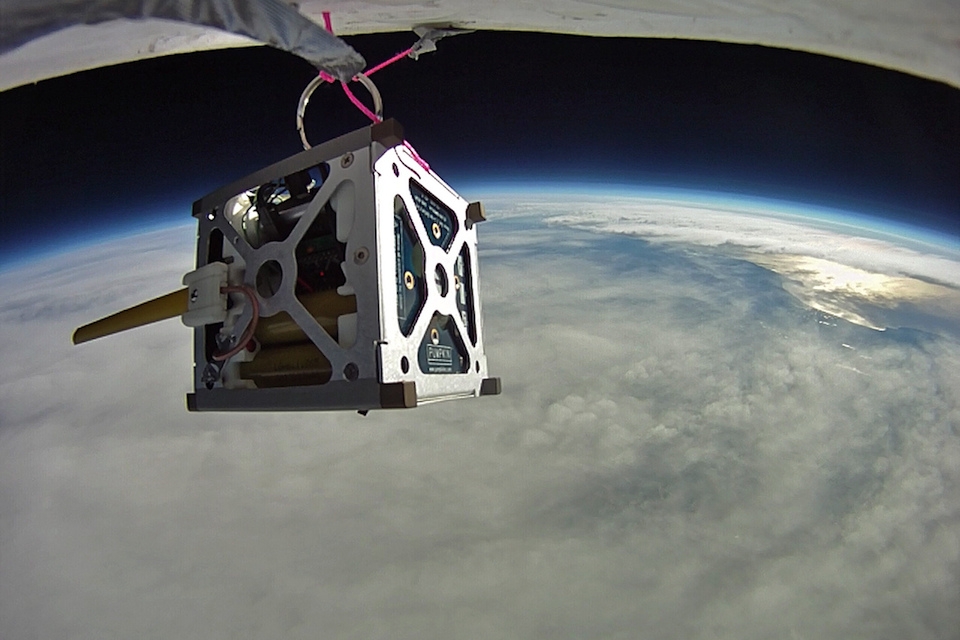By Kristen Mitchell
George Washington University has signed a $5.3 million corporate research sponsorship agreement with Maryland-based US Patent Innovations, LLC (USPI) that will fund a new initiative to develop biomedical applications for cold plasma technology in cancer treatment.
The funding from USPI will enable School of Engineering and Applied Science Professor Michael Keidar to expand his research in this rapidly emerging field. Studies have shown that cold atmospheric plasma technology can be used to target cancerous cells without harming normal biological tissue, a finding that could revolutionize cancer treatment.
Plasma is ionized gas that contains charged particles and is typically extremely hot. Cold plasma’s heavy particles—molecules, atoms and ions— are at room temperature and safe to touch. Cold plasma is made through a process that doesn’t give it enough time to get hot, Dr. Keidar said.
The newly funded initiative expands the research collaboration between Dr. Keidar and Jerome Canady, chief science officer of the Jerome Canady Research Institute for Advanced Biological and Technological Sciences (JCRI-ABTS), chairman of the USPI board of managers and noted surgeon. Together Dr. Keidar, Dr. Canady, consulting scientists and other subsidiaries of USPI will explore potential applications for cold atmospheric plasma in the treatment of breast, brain, gastrointestinal, colorectal, ovarian, cervical, lung and skin cancers.
“[This funding] will allow us to move more aggressively toward understanding the mechanisms of plasma and also to build adaptive cold plasma devices that will eventually translate into commercial products,” Dr. Keidar said. “This partnership will accelerate the translational part and bring devices to clinical use much faster than they would otherwise.”
The $5.3 million contract is the largest corporate research funding agreement in GW history.
“As GW’s research profile continues to accelerate, these types of industry and corporate partnerships will become more and more common,” said Vice President for Research Leo M. Chalupa.
The research at the heart of this agreement represents an innovative cross-disciplinary collaboration at GW, said Thomas Russo, GW’s assistant vice president for industry and corporate research.
“In this case, a mechanical engineer has created technology with transformative applications in the field of medicine,” Mr. Russo said. “Structuring the agreement required the involvement of multiple offices across the university. This novel partnership demonstrates GW’s capability to connect world-class researchers with early-stage innovative companies to achieve mutually beneficial results.”
The award also highlights the significant real-world applications of growing research at the School of Engineering and Applied Science (SEAS).
“Securing this major award is validation of the expertise of our faculty and a milestone in establishing the school as pre-eminent in research,” said David Dolling, SEAS dean.
The use of cold atmospheric plasma-based instruments resulting from prior collaborations between Drs. Keidar and Canady have already shown promise in the treatment of cancer. In January, a surgical team used the Canady HeliosTM Cold Plasma Scalpel to selectively kill cancerous tissue during a two-stage liver resection in a patient with advanced inoperable liver cancer. The innovative technology allowed the surgical removal of the cancerous tissue without damaging the blood supply to the remaining liver.
Cold atmospheric plasma can be tailored for an individual person or cancer type in ways chemotherapy cannot. Researchers can monitor how plasma species interact with cells and can record information about the interaction. Based on the response, scientists can modify the plasma’s composition and ideally improve the outcome.
Dr. Keidar believes plasma has a self-adaptive mechanism that allows it to target cancer cells without human intervention. A continuing partnership with USPI will improve GW’s ability to advance research in this field. Under the agreement he plans to delve further into cold plasma’s adaptability and individualization, he said.
“If you find the right conditions, plasma will actually differentiate between normal cells and cancer cells and will kill only cancer cells,” Dr. Keidar said. “This is what makes plasma extremely unique, and this entire effort is geared toward that particular idea.”
Michael Plesniak, chair of SEAS Mechanical and Aerospace Engineering, said the department is proud to have Dr. Keidar lead this interdisciplinary effort in plasma medicine.
“It is an excellent example of how cutting-edge research at the interface between engineering and medicine can lead to novel and transformative approaches to treating cancer,” he said. “The relatively new field of plasma medicine has been applied to cancer treatment, which opens up a nascent area of research in ‘cancer engineering’ that will be increasingly important in the coming decade.”
Dr. Canady said that USPI’s investment partners are excited about further expanding this collaborative plasma research program at GW. “The GW research initiative will expand and accelerate a number of USPI’s strategic programs,” he said.
Dr. Canady’s team will apply for a Food and Drug Administration investigational device exemption to start clinical trials on the cold plasma scalpel later this year.
“The resulting research will provide a bridge for new product development and may transform the way cancer is treated in the future,” Dr. Canady said.



